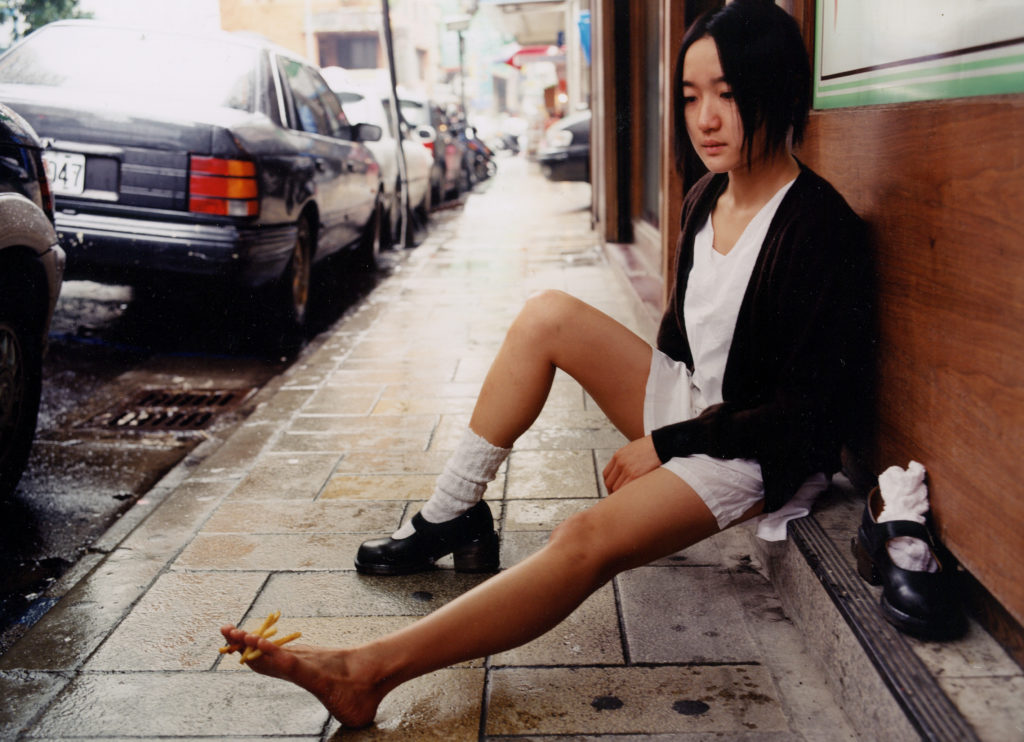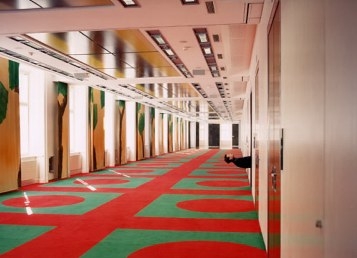400 Words on Erwin Wurm’s Conceptual Scupture
This piece was published on Stretcher.org. The original can be found here, or this post can be cited as: Buckner, Clark. “400 Words on Erwin Wurm.” www.clarkbuckner.com. web. Day, Month, Year the post was accessed.

Erwin Wurm, Outdoor Sculpture, (from the series ‘Taipei’). C-print. 126.5 x 159.1. Courtesy of the artist and Jack Hanley Gallery
Erwin Wurm constructs, what he calls, “conceptual sculptures” that engage and transform everyday settings with absurd gestures and juxtapositions. They are transitory constructions built with human figures, which have theatrical, dancerly qualities, and test the boundaries between sculpture and performance. To compliment the major survey of his work currently at the Yerba Buena Center for the Arts, Jack Hanley Gallery mounted an exhibition of photographs documenting several of Wurm’s sculptures. In “Outdoor Sculpture,” from the series, “Taipei,” a girl sits on the curb with one shoe off and french fries between her toes. Her gaze is transfixed on her foot, as if she were either admiring her nail polish or contemplating the meaning of existence.
In “Indoor Sculpture,” from the series, “CC-Graz” a man’s legs stick out from beneath an empty, narrow, chest of drawers apparently abandoned in a hallway. Is he homeless? Is he stealing a nap while at work? Or is he trying to hide in a more profound or paranoid way – for instance, from his fate? And in a piece from the series, “Zurich,” Wurm stands barefoot, with a broom protruding horizontally from the top of his legs. The image has distinct formal qualities, including a limited pallet of grey, white, and yellow, and a subtle juxtaposition of vertical and horizontal lines that is established between the standing figure, the broomstick, and the wall. But the piece is also allegorical and presents the artist as a figure with a stick up his ass. The strength of Wurm’s sculptures lies in their synthesis of the commonplace, the philosophical, and the absurd. Simple gestures in his work interrupt expectations of where things belong and how they function. They pose questions in the midst of everyday life about who we are and how we live. But his art does not therefore give way to philosophy. The stupid banality and strangeness of his constructs mock the possibility of taking life or his work too seriously. And this absurdity, it seems, is key to the human condition that Wurm works to articulate.

